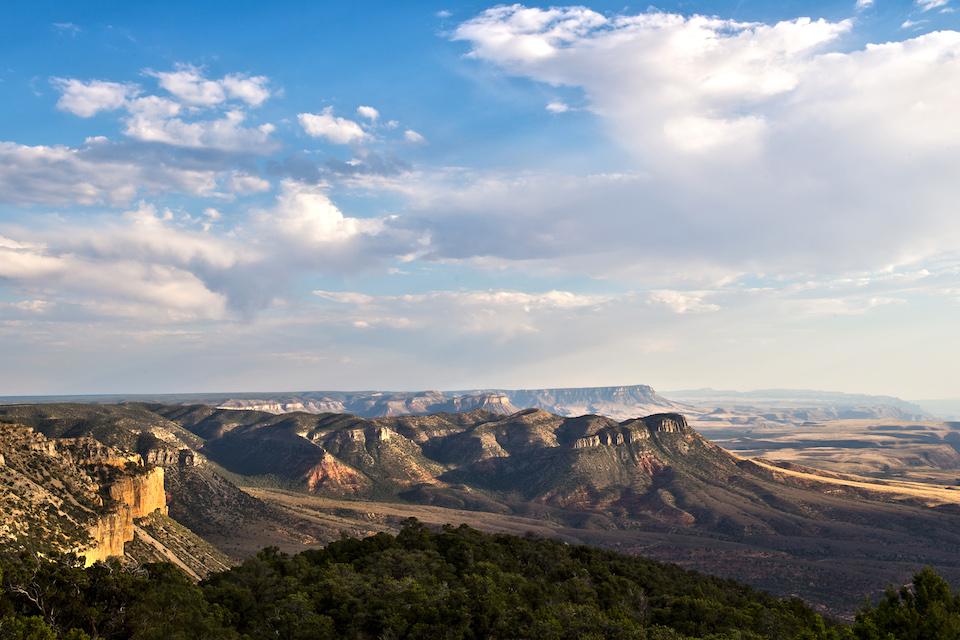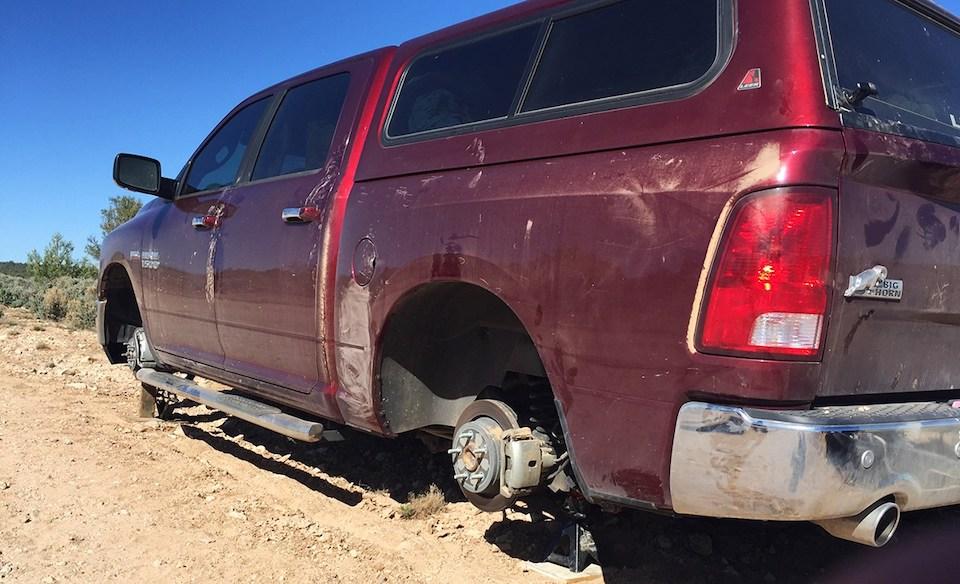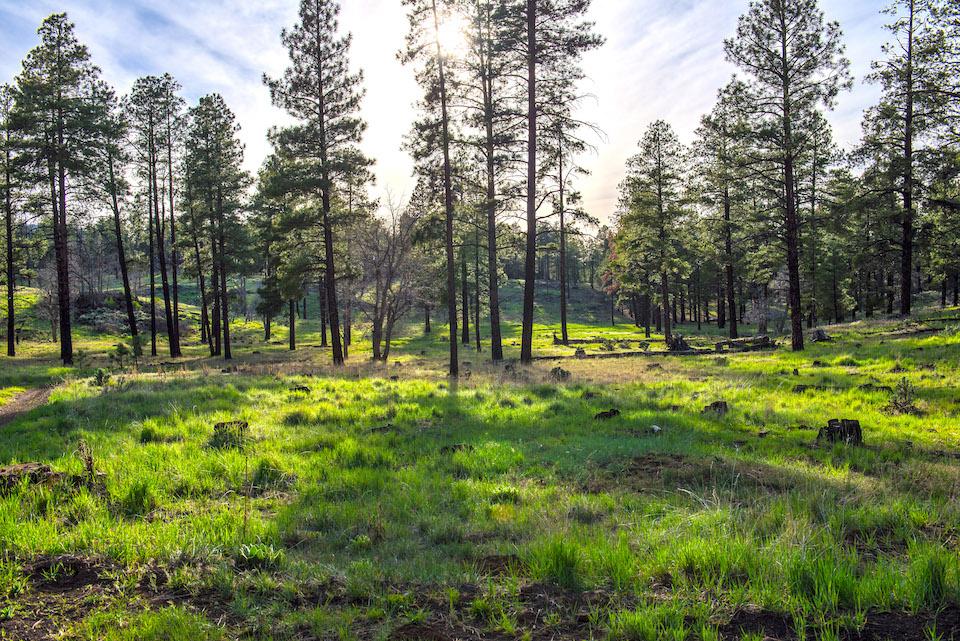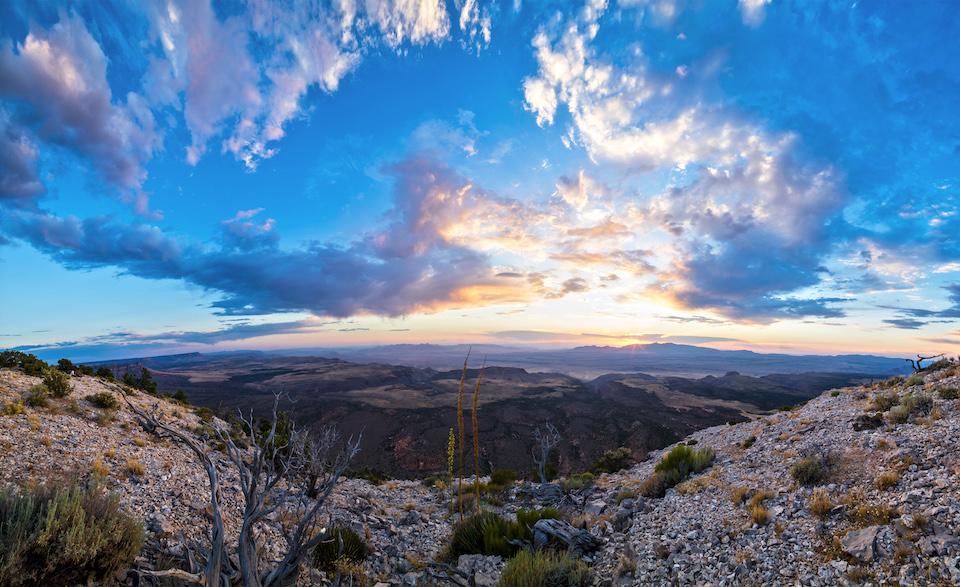
When you really want to get away from it all, consider Parashant National Monument/NPS
We all have bucket lists for places in the National Park System we’d like to visit. No doubt many have, or had, Yellowstone or the Grand Canyon or Shenandoah on their bucket lists.
But what about Parashant National Monument? Have you ever heard of it? Would you recognize it if we called it Grand Canyon-Parashant National Monument (which it once was, though "Grand Canyon" has been dropped from the name so as not to have folks thinking it's part of Grand Canyon National Park.)
This lonely, million-acre sweep of land is not for windshield visitors, but rather those seeking a place out of the past, where the rugged beauty not only surrounds you, but also challenges your abilities to survive if you're not careful or prepared. There are no paved roads, no gas stations, no restaurants or lodges in Parashant National Monument. But visit this place and you'll find solitude, relics from Western history, and a remoteness to be embraced.
"We are located on the Arizona Strip, the very northern, western portion of the state of Arizona, and it's called the Arizona Strip because it's separated from the rest of the state by the Grand Canyon," Jeff Axel, the park's chief of interpretation, told me. "And it was established back in 2000 by President Clinton, and the purpose for the establishment was to preserve these beautiful landscapes, very little development, and fantastic scenery. It's truly one of the last more or less undeveloped portions of the Lower 48 states. It's a great place to get away, and find that solitude.
"And quite honestly, there are a couple places you can go, many places you can go, to have a piece of the Grand Canyon all to yourself."
The lack of paved roads, lodges, and stores is not an oversight.
"That's really designed that way to allow folks that want to visit to have that experience away from the modern world. You really are stepping back in time. You're going to look at your cellphone, it's going to say 'no service,'" said Axel. "For a lot of people, that can be very unnerving. But it's going to stay that way. The roads are going to remain unpaved, and it's there for exploration, discovery, but also to challenge yourself. You do need to be well-prepared to go out there."
The chief is not kidding with that last point. Anyone thinking of visiting Parashant for the first time should spend a couple minutes, or longer, perusing the "4x4 Vehicles and Off-Pavement Travel Safety" page on the park's website. If the photos don't convince you not to visit, they should help you prepare cautiously for driving into the park.
"Do not overestimate the capability of your vehicle. Some roads are fine for stock high clearance 4x4 pickups and SUVs. Others are so rough they should only be attempted with a UTV (Utility Terrain Vehicle). Tow bills often exceed $2,000," reads one section.
"If you plan to spend a lot of time on unpaved roads, your vehicle needs at least one All-Terrain spare tire. Most stock spare tires are thin and will blow out after only a few miles on a rocky road," adds another. "Do you need 2 spare tires? Motorists occassionally scrape and rupture the sidewall of a front tire against a rock along the road. Then before they realize what happened they also rip open the sidewall on the rear tire on the same rock. This has caused many double flats."

This long wheelbase truck is the right vehicle for much of Parashant, but it had street tires that were not All-Terrain rated to go off pavement. Believe it or not this vehicle had THREE tires that went flat in one day/NPS, Jeff Axel
"It's very rugged, and the safety net of the modern world is far behind you," Axel stressed during our conversation.
So rugged is this landscape, that the park warns travelers heading east from Las Vegas that they cannot go through Parashant to reach the North Rim of Grand Canyon National Park.
Navigation programs such as Google are routing travelers through the monument from Las Vegas, NV and St. George, UT. DO NOT FOLLOW THESE ROUTES. All monument roads are unpaved, rough, and need 4 wheel drive. There are NO services or cell reception
But if you are well-prepared and ready to explore, this land has much to reveal. From floor to roof, the monument climbs 7,000 feet, and along the way features a variety of ecosystems that run from the Mojave Desert to Ponderosa pine forests atop Mount Trumbull.
"For folks who like to look at the transition of biological communities, going from the Mojave, which is a great thing to explore maybe between October and April, we have fantastic Joshua tree forests, and fantastic geology to explore," the interpretation chief said. "As you move up the elevation what you're really doing is you're going through the transition zone between the Basin and Range geologic province to our west, which is, for those who like geology, this area where the crust is extending, moving western North America further to the west, it's a really interesting broken topography that folks see in Nevada, especially.
"But, we also have a good chunk of the Colorado Plateau, and so as you're moving up that transition zone from the Basin and Range up the Grand Wash cliffs, which are stupendously beautiful. From the Grand Wash itself you're looking up 5,000 feet, down by the river, the Colorado River. You get up on top and you move into the pinyon juniper, sage, black brush, and then into the Ponderosas themselves," continued Axel. "So you can really visit Parashant any time of year. In the winter, down the Mojave Desert, it's fantastic. In the summertime, you want to move up to Mount Trumbull, Mount Logan, up in those 6-7,000-foot locations."

Head up to Mount Trumbull and you can surround yourself with Ponderosa groves/NPS
When you do start planning a visit, call the public lands information center (435-688-3200) in St. George, Utah, where the park's visitor center is based, to inquire about both the weather and road conditions in the monument.
"We don't provide highly resolved road conditions, because there are so many roads out there, it's just hard to know," Axel cautioned. "But we want people to be prepared for any condition that they might encounter. Call ahead."
Explore the park's website and you'll learn that there are nine scenic drives the Park Service points to in the monument. In short, if you want to visit the Mojave Desert or Mount Trumbull or reach an overlook with a view into Grand Canyon National Park and down to the river, you can do that. But again, you need a proper rig with All-Terrain tires. And even with those, a satellite phone wouldn't be a bad idea, either.
And be sure to note the seasonality of these scenic drives; some are not recommended in the winter months.
"We are still working on developing a few other scenic routes to share with folks, because we have 1 million acres. There's so much to see out there," said Axel. "Being that we're at this margin between the Basin and Range and Colorado Plateau and the Grand Canyon, there's so much vertical relief that we have fantastic viewpoints. A few of my favorites are Twin Point, and that one goes out just about directly south from St. George, and it's actually one of the ones that's more accessible to folks that don't have the super burly four-wheel drive vehicle. And you get out there, and everytime I've gone, there's nobody out there. I've never seen another member of the public out there, but there's a number of great places to camp. You can literally set your tent up on the edge of the Grand Canyon.
"Now that's not a great idea if you're a sleep walker, but you can have this beautiful view all to yourself. That's a great one," he said. "Another one that's actually a little more intimate that's a real surprise, there are not a lot of places where you can drive down into the Grand Canyon, down near the river, and one of those is our Whitmore Canyon Overlook Road, that goes south from St. George and the Mount Trumbull Schoolhouse, and you end up about 1,000 feet above the Colorado River. And that's a great place to camp. It's still in the monument, you don't need a permit to camp there. We just ask that folks camp in the same places that others have camped so we minimize our impact on the environment."
Perhaps because of the ruggedness of this place, or that it's one of the lesser-known units of the National Park System -- indeed, the monument is co-managed with the U.S. Bureau of Land Management, which might be responsible for its lack of notoriety among the "national park" community -- but remarkably few people come here.
"We guess maybe, and this is an educated guess, maybe 30,000 visitors a year right now," said Axel. "But it's going up, we've been discovered."
You can practically guarantee that you won't see anyone else during your visit to Parashant if you plan a trip to one of the monument's four wilderness areas (Mount Trumbull, Paiute, Mount Logan, and Grand Wash Cliffs).
"Our wilderness areas aren't heavily used. We only get a few questions every year about that," said Axel. "But the folks that do go out there, again, they're going to find solitude. The Grand Wash Cliffs Wilderness is a great place to meander through the Hermit formation, which is this beautiful red and yellow, cream sandstone rock layer. We've got two wilderness areas up in the high country near Black Rock Mountain. You're really going to have a wilderness experience there and not see anybody else."
Those looking for Western history can find it here, as well, though mostly in a broken down, decripit fashion. There's the Tassi and Waring ranches, the remains of the Grand Gulch Mine, and petroglyphs at Nampaweap.
As the Park Service says on the monument's website, "Parashant is remote. There are no crowds here. Be equipped to leave pavement, cell service, and the 21st century behind."

There's no shortage of gorgeous views to be found in Parashant, like this one from Hudson's Point/NPS
Traveler postscript: Catch my entire interview with Jeff Axel in Traveler's latest podcast, episode 83 to be posted at 6 a.m. Mountain time on September 13.



Comments
THanks!
Nice to read about it. Sounds like a bit of a challenge for a regular SUV, though :-(
Fascinating. Another hidden treasure under NPS management.
Nice write up. I've been meaning to get out to Trumbull for a while now, maybe this will push me to actually do it.